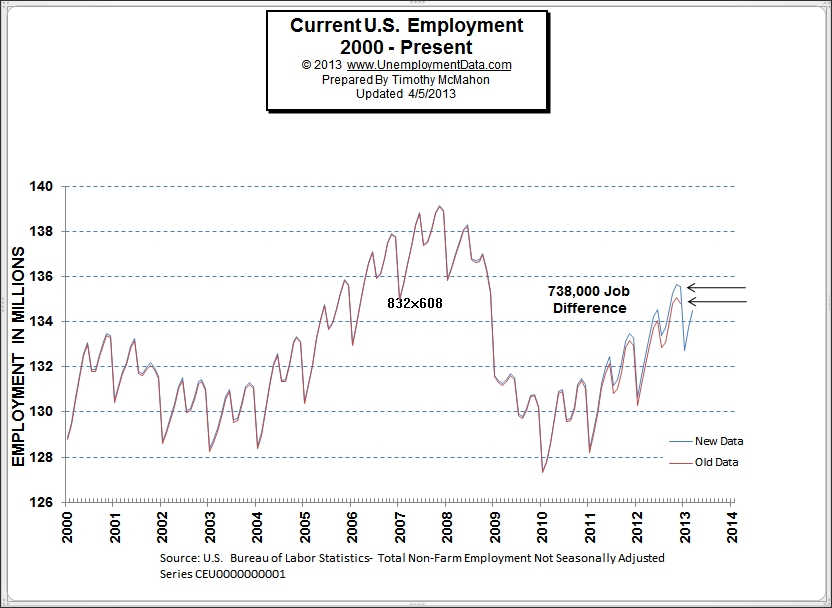The government shutdown is over and the U.S. Bureau of Labor Statistics is recovering from their unscheduled vacation. The United States federal government shutdown of 2013, lasted from October 1 to 17, 2013. Unemployment data for the month of September was due to be released on October 4th i.e. four working days into the shutdown.

Although the shutdown inconvenienced vacationers wanting to see National Monuments and the National Zoo, did it really save any money? If past shutdowns are any indicator… probably not. Government employees will probably [Read more…] about BLS Recovering From Shutdown

 Make your resume interesting by including some unique facts about yourself. If you start off with a small section called “Life Experience” and include a few interesting things you’ve done like hiking the entire Appalachian Trail or catching a 50 pound fish or whatever, it will make you memorable and give the recruiter something to ask you about if they call you in for an interview.
Make your resume interesting by including some unique facts about yourself. If you start off with a small section called “Life Experience” and include a few interesting things you’ve done like hiking the entire Appalachian Trail or catching a 50 pound fish or whatever, it will make you memorable and give the recruiter something to ask you about if they call you in for an interview.



 Whether the Quantitative Easing is actually having much of an effect on unemployment or not is a discussion for another day. But as we said in a recent article entitled:
Whether the Quantitative Easing is actually having much of an effect on unemployment or not is a discussion for another day. But as we said in a recent article entitled:  2) Cardiovascular Technologists and Technicians and Vascular Technologists – Cardiovascular technologists and technicians and vascular technologists use imaging technology to help physicians diagnose cardiac (heart) and peripheral vascular (blood vessel) ailments in patients. They also help physicians treat problems with cardiac and vascular systems, such as blood clots. This position only requires an Associate’s degree and the median salary in 2010 was $49,410. Available jobs are expected to grow much faster than average with an estimated 29% increase during the period from 2010 to 2020. One example of this type of position is an EKG Technician, certifications are available from a variety of different schools including
2) Cardiovascular Technologists and Technicians and Vascular Technologists – Cardiovascular technologists and technicians and vascular technologists use imaging technology to help physicians diagnose cardiac (heart) and peripheral vascular (blood vessel) ailments in patients. They also help physicians treat problems with cardiac and vascular systems, such as blood clots. This position only requires an Associate’s degree and the median salary in 2010 was $49,410. Available jobs are expected to grow much faster than average with an estimated 29% increase during the period from 2010 to 2020. One example of this type of position is an EKG Technician, certifications are available from a variety of different schools including  The amount of the deduction that a taxpayer can claim for job hunting is limited. The IRS only allows you to deduct expenses that are in excess of two percent of your annual income for expenses related to job hunting. So if you are making $30,000/yr. the first $600 in expenses is not deductible. For this reason, it is important to keep meticulous records of every job-hunting expenses in order to get above the threshold.
The amount of the deduction that a taxpayer can claim for job hunting is limited. The IRS only allows you to deduct expenses that are in excess of two percent of your annual income for expenses related to job hunting. So if you are making $30,000/yr. the first $600 in expenses is not deductible. For this reason, it is important to keep meticulous records of every job-hunting expenses in order to get above the threshold.
 In February, I got an answer, not directly mind you, but when I looked at the January Employment numbers they have magically changed all the way back to July of 1991. Yes, “unadjusted” employment numbers have been adjusted, changed, fudged, manipulated whatever you want to call it.
In February, I got an answer, not directly mind you, but when I looked at the January Employment numbers they have magically changed all the way back to July of 1991. Yes, “unadjusted” employment numbers have been adjusted, changed, fudged, manipulated whatever you want to call it.

 After all, they reason, why spend years accumulating it when you can steal it all in a few minutes? Retirement fraud is big business to some, and they will stop at nothing to get other peoples’ hard-earned money. Senior citizens have long been targets of scams. So after retiring, there are many scams you should be wary of, so that you are not left broke and wondering what to do next. Here are some
After all, they reason, why spend years accumulating it when you can steal it all in a few minutes? Retirement fraud is big business to some, and they will stop at nothing to get other peoples’ hard-earned money. Senior citizens have long been targets of scams. So after retiring, there are many scams you should be wary of, so that you are not left broke and wondering what to do next. Here are some 